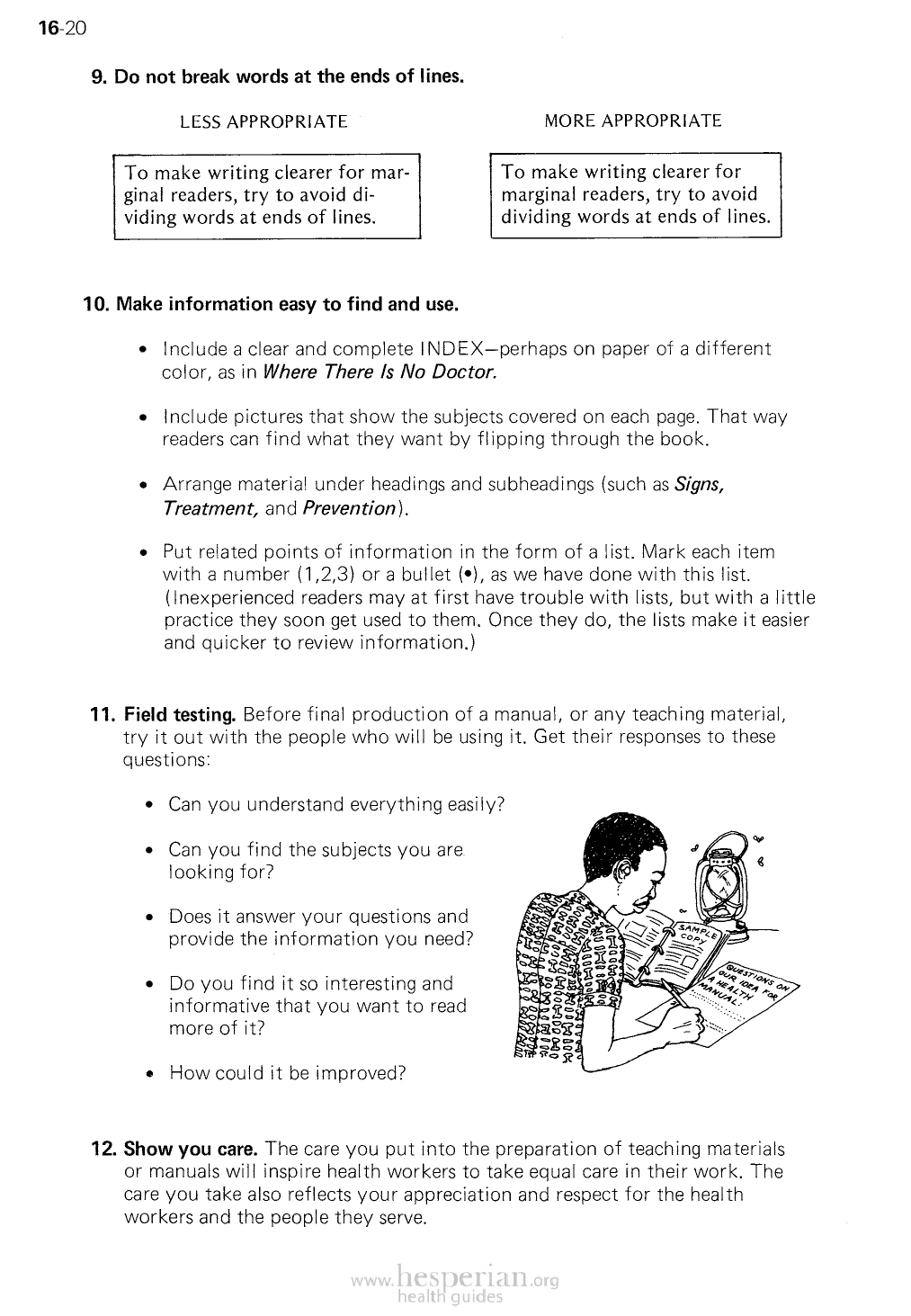
16-20
9. Do not break words at the ends of lines.
LESS APPROPRIATE
MORE APPROPRIATE
To make writing clearer for
marginal readers, try to avoid
dividing words at ends of lines.
To make writing clearer for
marginal readers, try to avoid
dividing words at ends of lines.
10. Make information easy to find and use.
• Include a clear and complete INDEX—perhaps on paper of a different color, as
in Where There Is No Doctor.
• Include pictures that show the subjects covered on each page. That way
readers can find what they want by flipping through the book.
• Arrange material under headings and subheadings {such as Signs, Treatment,
and Prevention),
• Put related points of information in the form of a list. Mark each item with a
number (1,2,3) or a bullet (•), as we have done with this list. (Inexperienced
readers may at first have trouble with lists, but with a little practice they soon
get used to them. Once they do, the lists make it easier and quicker to review
information.)
11. Field testing. Before final production of a manual, or any teaching materia try it
out with the people who will be using it. Get their responses to these questions:
• Can you understand everything easily?
• Can you find the subjects you are
looking for?
• Does it answer your questions and
provide the information you need?
• Do you find it so interesting and
informative that you want to read more
of it?
• How could it be improved?
12. Show you care. The care you put into the preparation of teaching materials or
manuals will inspire health workers to take equal care in their work. The care
you take also reflects your appreciation and respect for the health workers and
the people they serve.